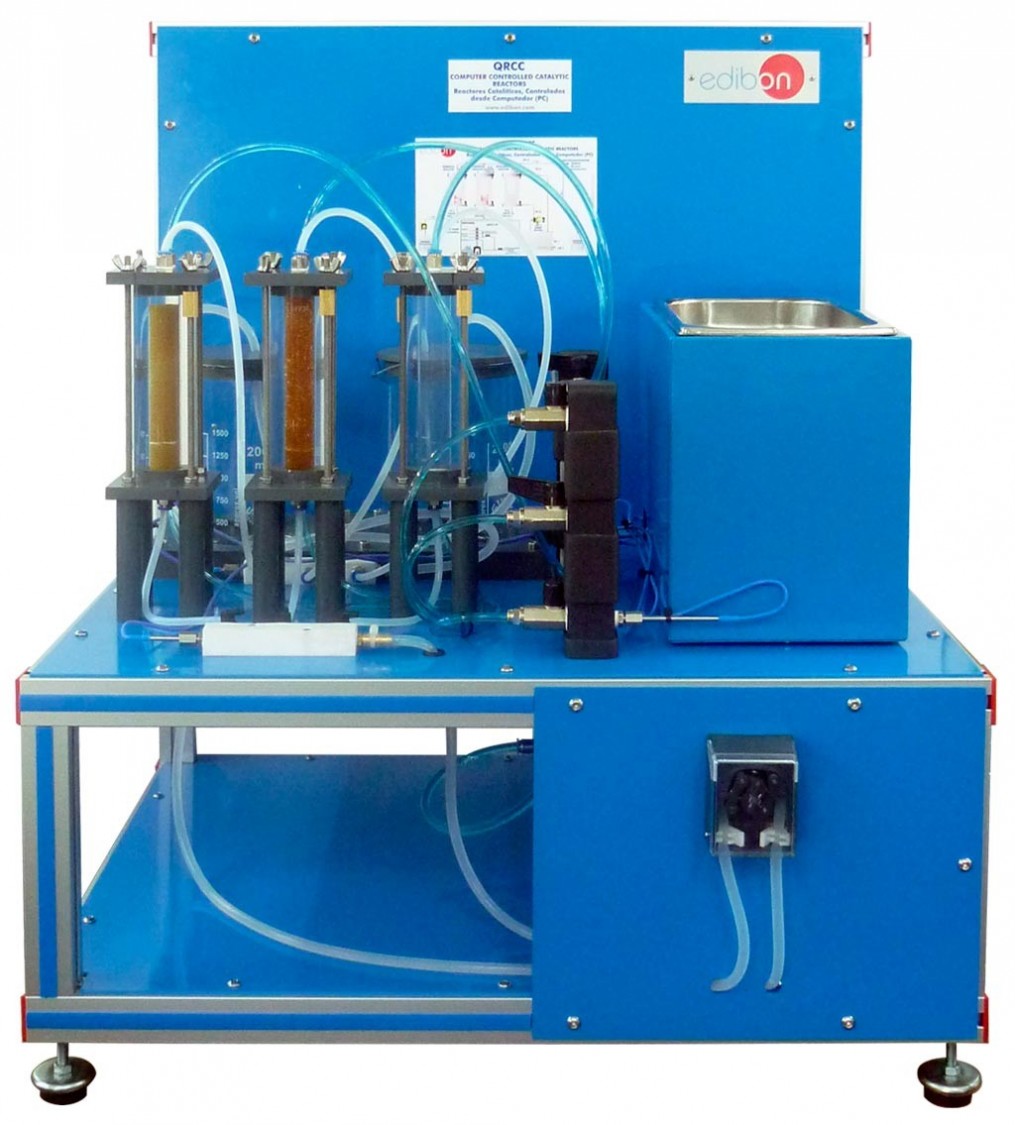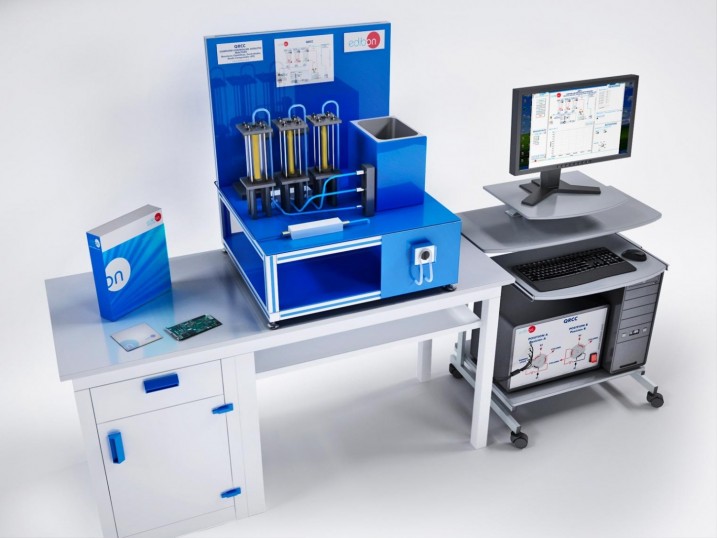
Computer Controlled Catalytic Reactors
เครื่องปฏิกรณ์เร่งปฏิกิริยาที่ควบคุมด้วยคอมพิวเตอร์
เครื่องปฏิกรณ์เร่งปฏิกิริยา (Reaction Acceleration Device) เป็นอุปกรณ์หรือระบบที่ใช้ในการเพิ่มความเร็วของการเกิดปฏิกิริยาเคมี โดยลดเวลาที่ต้องใช้ในกระบวนการนั้น ๆ หรือเพิ่มอัตราการปฏิกิริยา ซึ่งมักใช้ในงานวิจัยและพัฒนาทางเคมีเพื่อสร้างผลิตภัณฑ์ที่มีประสิทธิภาพสูงขึ้นหรือลดต้นทุนการผลิตในอุตสาหกรรม เครื่องปฏิกรณ์เร่งปฏิกิริยามีหลายรูปแบบและหลักการทำงานต่าง ๆ เครื่องปฏิกรณ์เร่งปฏิกิริยามักถูกใช้ในงานวิจัยและพัฒนาทางเคมี, อุตสาหกรรมเคมี, อุตสาหกรรมอาหาร, การผลิตยา, การวิจัยและพัฒนาขั้นสูง, และอุตสาหกรรมที่ต้องการผลิตภัณฑ์ในปริมาณมาก การใช้เครื่องปฏิกรณ์เร่งปฏิกิริยาสามารถช่วยในการลดเวลาและต้นทุนในการผลิตและพัฒนาผลิตภัณฑ์ใหม่ๆ
INTRODUCTION
In a chemical reaction, the process of catalysis is the increase or decrease in the speed of the chemical reaction (reaction kinetics) caused by what we call a catalyst. Nowadays, research and development of catalysts are extremely important in the chemical industry. It is thought that approximately 90 % of industry-made chemical products involve some catalytic process in their processing.
One of the main characteristics of catalysts is that they are not consumed by the chemical reaction, although they may suffer some deterioration. This deterioration is due to the loss of their catalytic features. Besides, the student must understand the immobilization of catalysts in the reactors, a fact that prevents them from being dragged by the final product.
EXERCISES AND PRACTICAL POSSIBILITIES TO BE DONE WITH THE MAIN ITEMS
- Study of the principles of catalytic fixed-bed reactors.
- Effect of the variation in the particle’s size in the effectiveness of a fixed-bed reactor.
- Comparison of chemical and biological (enzymic) catalysis.
- Checking the influence on different variables (feed flow, temperature of reaction, reagents concentration) on the obtained final product.
- Spectrophotometer calibration.
- Using the spectrophotometer and product analysis.
- Study of the “FIA” Flow Injection Analysis technique and principles
(the additonal recommended element QRCC-IF is required). - Examination of the reproducibility and sensitivity of the “FIA” analysis method as a function of the flow rate and sample concentration (the additonal recommended element QRCC-IF is required).
Additional practical possibilities: - Sensors calibration.
- Studies of steady and unsteady state catalysis.
- Flow characterisation in a fixed-bed.
- Mass balances.
- Determination of steady state and unsteady state kinetics of a catalytic fixed-bed reactor.
Other possibilities to be done with this Unit: - Many students view results simultaneously.
To view all results in real time in the classroom by means of a projector or an electronic whiteboard. - Open Control, Multicontrol and Real Time Control. This unit allows intrinsically and/or extrinsically to change the span, gains; proportional, integral, derivative parameters; etc, in real time.
- The Computer Control System with SCADA and PID Control allow a real industrial simulation.
- This unit is totally safe as uses mechanical, electrical/electronic, and software safety devices.
- This unit can be used for doing applied research.
- This unit can be used for giving training courses to Industries even to other Technical Education Institutions.
- Control of the QRCC unit process through the control interface box without the computer.
- Visualization of all the sensors values used in the QRCC unit process.
– By using PLC-PI additional 19 more exercises can be done.
– Several other exercises can be done and designed by the user.



